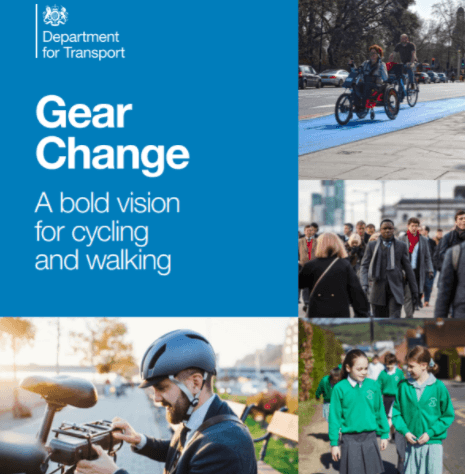
blog: Can we achieve the government's bold vision for cycling and walking?
Thursday 9th September 2021
September marks the start of ITP’s Active Travel month. Our team will be sharing their thoughts on topics directly influencing how we can encourage more people to cycle and walk. From proposed changes to prioritise pedestrians in the highway code, to lessons learnt delivering travel behaviour change campaigns during the pandemic, and a case study how a Dutch-style roundabout has made cycling in Cambridge safer. But let’s start by reflecting on where England is now in terms of prioritising active travel investment and the potential barriers to achieving the Government’s bold vision for cycling and walking.
A new era for cycling and walking
Over the last 18 months we have seen growing political support for cycling and walking. In May 2020, the Prime Minister announced a ‘new era for active travel’ with a £2bn package of measures starting with the Emergency Active Travel Funding (ATF) which funded the implementation of temporary active travel infrastructure in towns and cities in response to Covid-19.
The funding announcement was followed swiftly in July by the publication of the Government’s Walking and Cycling Plan for England (2020-2025) and the release of the updated Cycle Design Guide, LTN 1/20, setting a new design standard for cycle infrastructure.
Both of these policy documents build on the Government’s Cycling and Walking Investment Strategy (2016-2020) and the Local Cycling and Walking Infrastructure Plans (LCWIP) that Local Authorities have started to develop to identify active travel improvements at a local level.

To support the creation of longer-term active travel schemes, a second round of funding from the Active Travel Fund was released last November. For those Local Authorities who already had a LCWIP in place, it laid the groundwork for the rapid prioritisation routes to allocate the ATF grant. This, alongside revenue funding from the Access Fund (2017-21), and now the Capability Fund (2021/22), have provided critical revenue funding to support Local Authorities to develop LCWIPs and deliver behaviour change programmes to maximise the impact of the capital investments.
The importance of active travel has been acknowledged in wider political Plans including the recent Transport Decarbonisation Plan, which sets out the UK’s path to net zero, using the ‘social prescribing’ of active travel to tackle obesity; and supporting the economy to recover post-Covid.
Bumps in the road?
As we look ahead to the next 12 months (and beyond), there are several issues the Government will need to address if we are to continue a positive trajectory for creating a shift towards cycling:
- Funding for the long haul – Historic under investment in cycling infrastructure has meant many cycle networks have developed in a piecemeal fashion as funding has become available. Even following the Government’s £2bn investment announcement, the ATF and the Capability Fund have had short-term (~12 month) funding windows. This uncertainty around the longevity of funding limits the potential to plan for large-scale change.
- Capital AND Revenue – The Active Travel Fund (Tranche 1) saw many Local Authority teams implementing emergency active travel schemes on top of their existing workloads. Although there was a small revenue element to this Fund, it’s important not to under-value the role that revenue funding has in bolstering capacity within Local Authorities to bring in extra support to deliver schemes.
- Higher quality = higher cost – LTN 1/20 proposes higher quality infrastructure, but with that comes higher cost, in both the design and implementation of schemes. This will need to be a consideration as ministers wrestle to secure sufficient funding in the Autumn budget.
- Reconciling the cost of Covid-19 – The financial cost of Covid from public borrowing stood at £317.4 billion in 2020/21 alone. If public spending on active travel is reduced to reconcile the debt it could impact the viability of fulfilling the Gear Change Plan.
- NIMBY – Road space reallocation can be a locally contentious issue. Let’s not forget the uproar some cities experienced with the rapid introduction of temporary Low Traffic Neighbourhoods and pop-up cycle lanes. The DfT have advised that any Local Authority schemes that are removed means the authority is less likely to secure future funding, demonstrating how critical it is to secure early stakeholder and public buy-in for schemes.
- Measuring the impact – For all the excitement of designing and implementing new schemes, one thing that is all too often overlooked is how schemes will be monitored and evaluated. It’s not enough to focus on the scheme or programme outputs (i.e., the number of kms of cycle route have been delivered) to build a case for future investment we need to know the outcomes (i.e., the number of people who have changed behaviour) so that the expected benefits can be estimated.
Keep an eye out for other content we'll be sharing throughout September for ITP's Active Travel Month, by following us on LinkedIn and Twitter.
